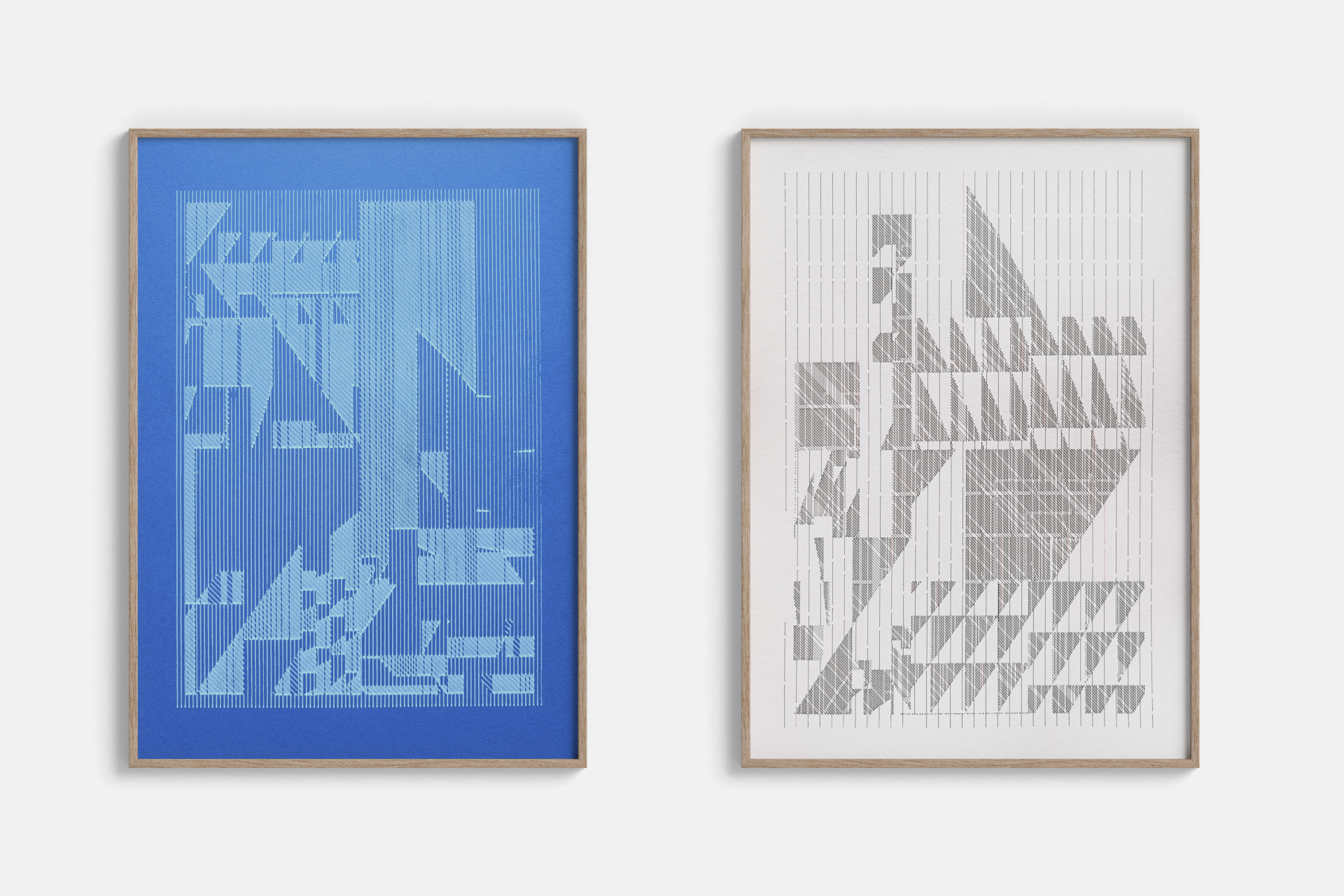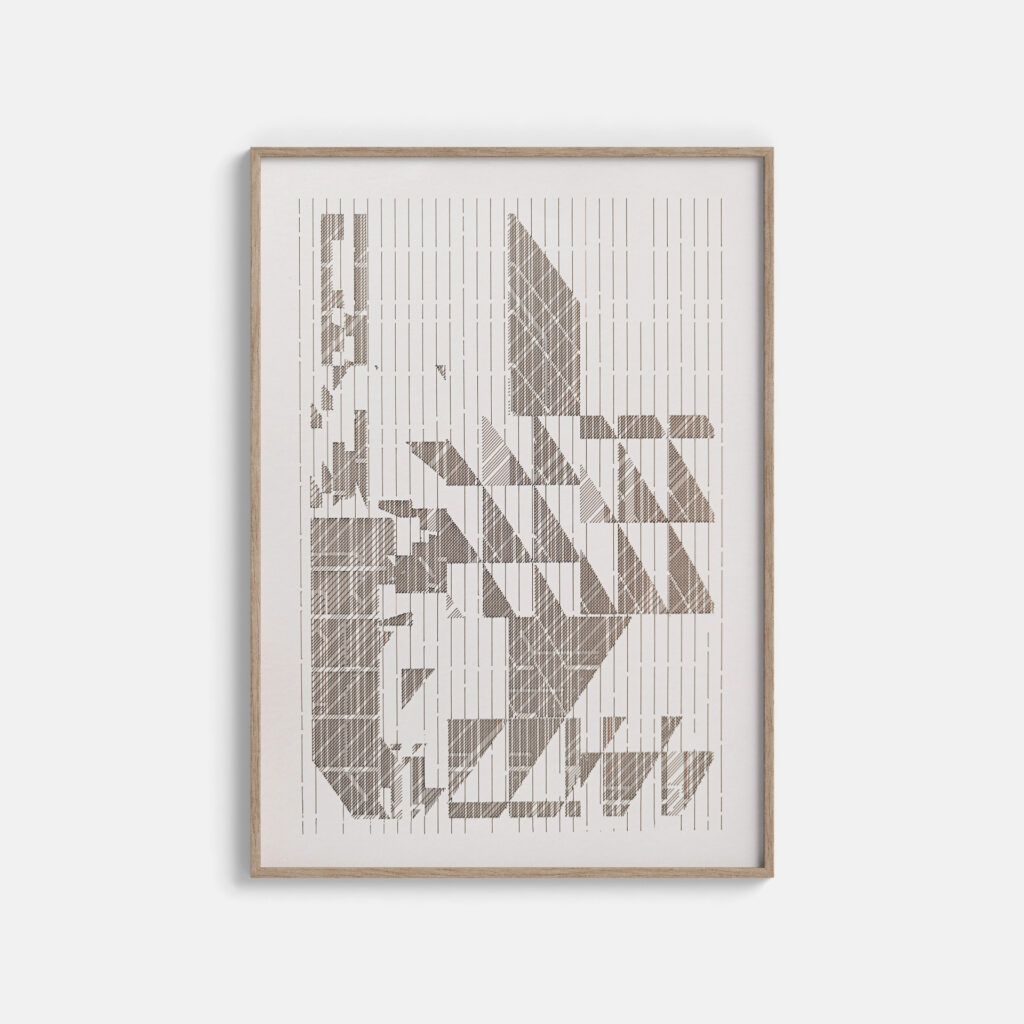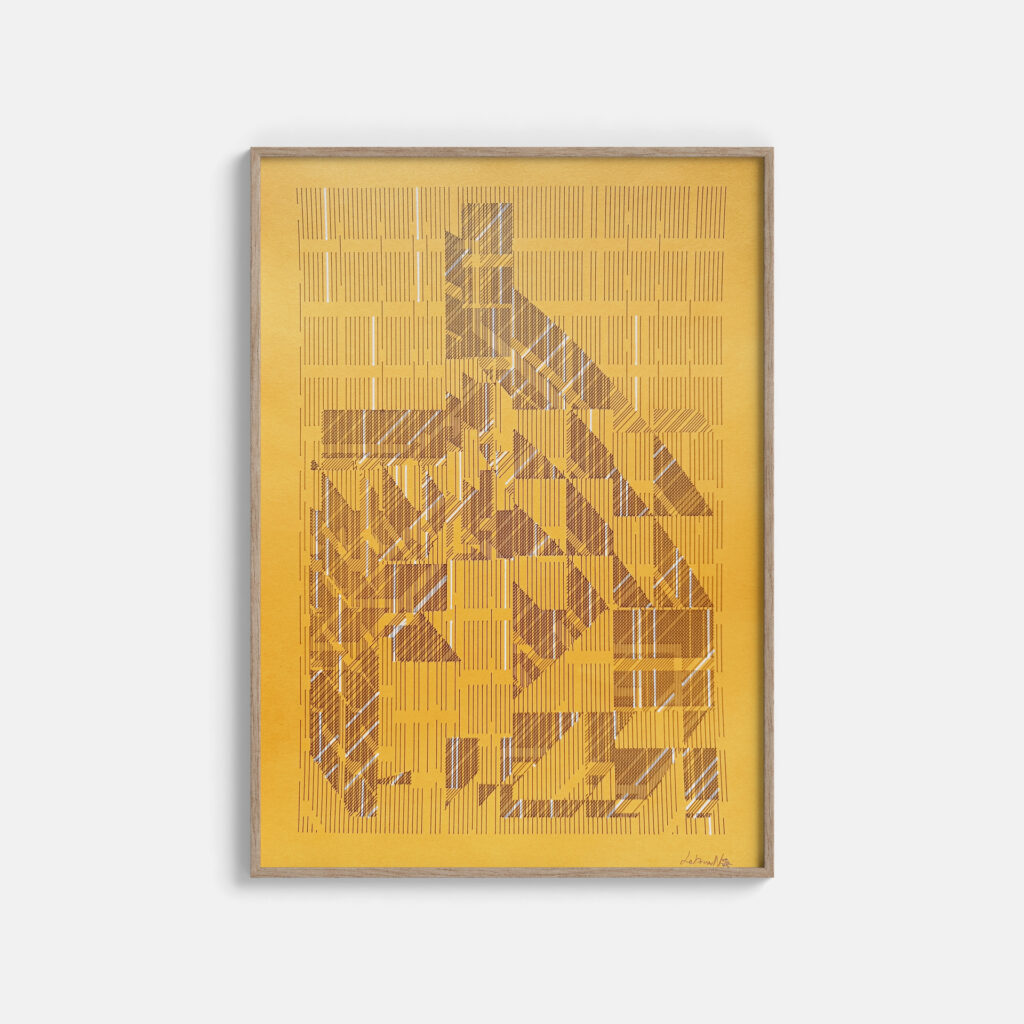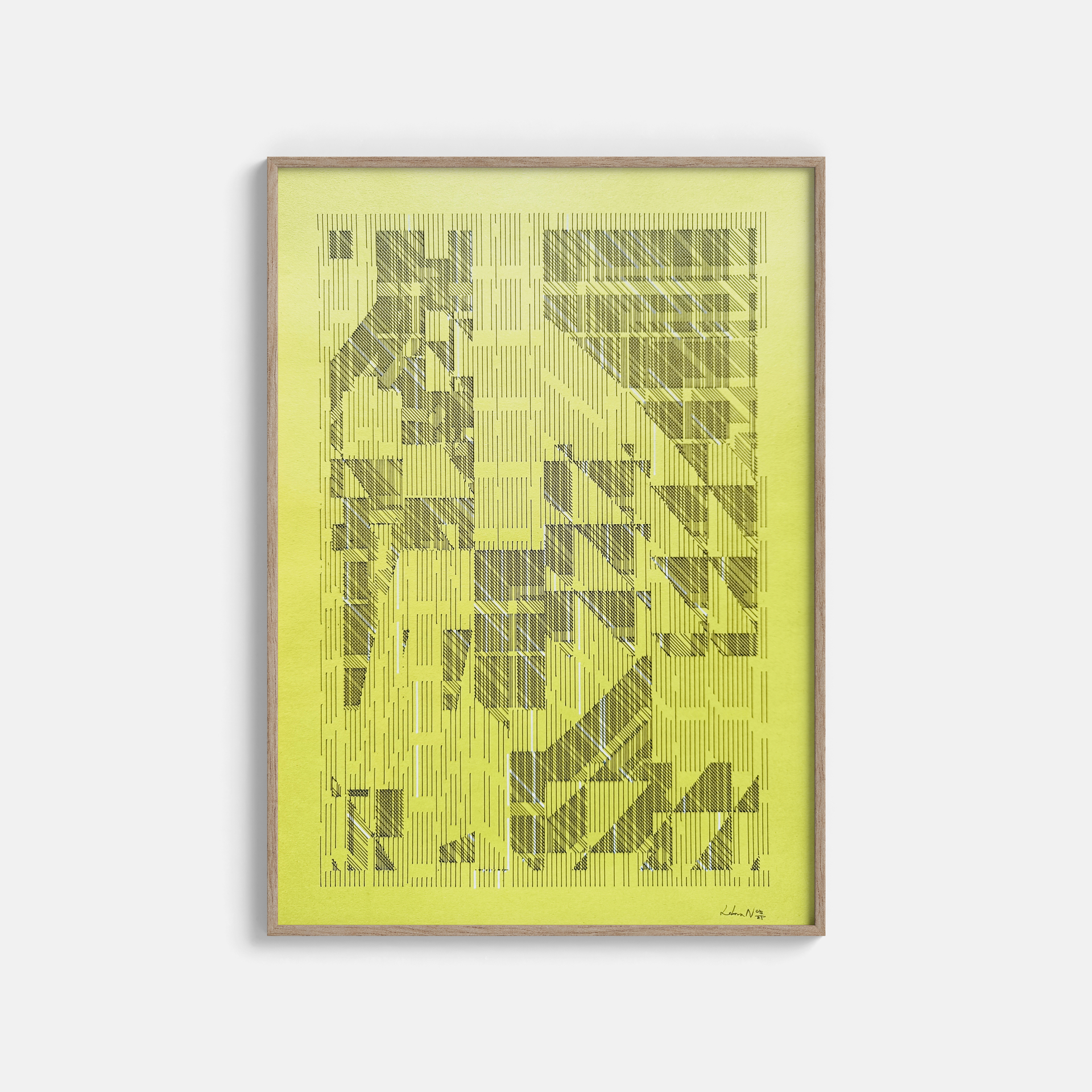
GLSL and JavaScript programming, pen plotter DIN A3 (11.69x16.53 in), work in progress, 2025.
The third in the Variationes Circa Triangula corpus, this research takes as its starting point the constraint of creating a composition from triangles, with each series showing an evolution or modification of the protocol.
Inspired by works from the 60s and 70s (Op Art, GRAV, Sol Lewitt…) using simple geometric forms, this series reinterprets this style with a system of grids or rasters. The composition is crossed by a series of straight lines in different directions: vertical, horizontal and diagonal.
The composition is created in two stages, with the first part of the program initializing the composition with solid black shapes and empty zones. The painting is built around a modular grid, by successive division of the composition space. A scale and rotation are determined for each cell, and a triangle is drawn within each cell. The main effect of scale variations is to produce croppings within the triangle, or conversely to create repetition when the cropping area is larger than the cell surface. The various rotations will vary the shape of the triangle as if a horizontal or vertical mirror were applied.
Once this first structure has been created, it is saved as a stencil. The program will reinterpret it according to the color of each pixel. The next step in the protocol is to draw lines above this stencil structure. As it draws these lines, the program checks point by point whether they reach the surface of a triangle, making them visible or erasing them if necessary. At the same time as revealing the initial composition, the program reveals its system of reading or interpretation by creating intersecting grid patterns. This creates a rhythm in the length and spacing of each stroke, and this treatment is not confined to the pre-existing composition, but overflows and covers the entire compositional space.
This interplay of line spacing is complemented by another variation: color. The program counts the lines and each time it encounters a multiple, it decides to change the color of the line. Is it to check that the process is working properly, that there are a certain number of lines? Or is it a purely decorative, painterly gesture?


